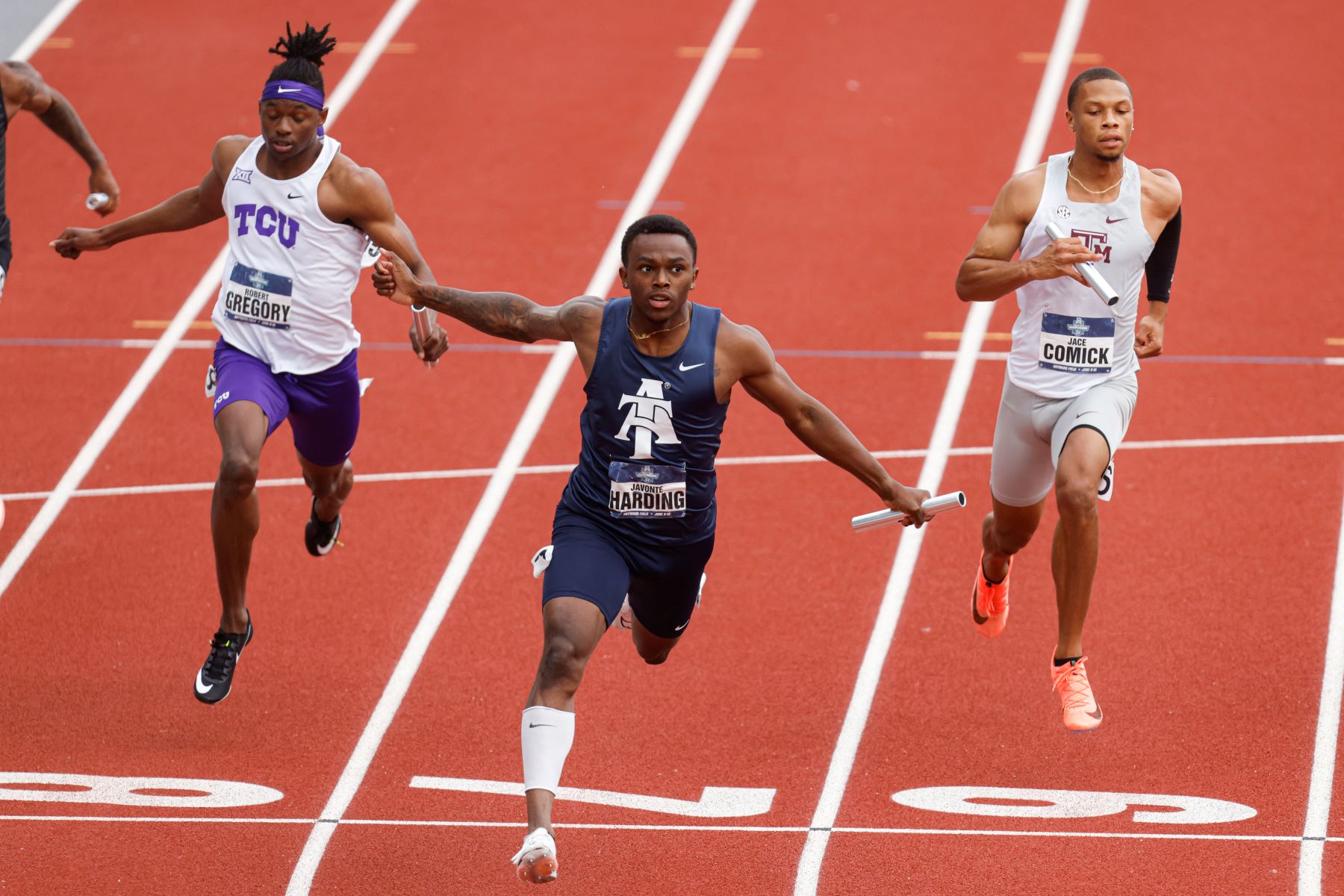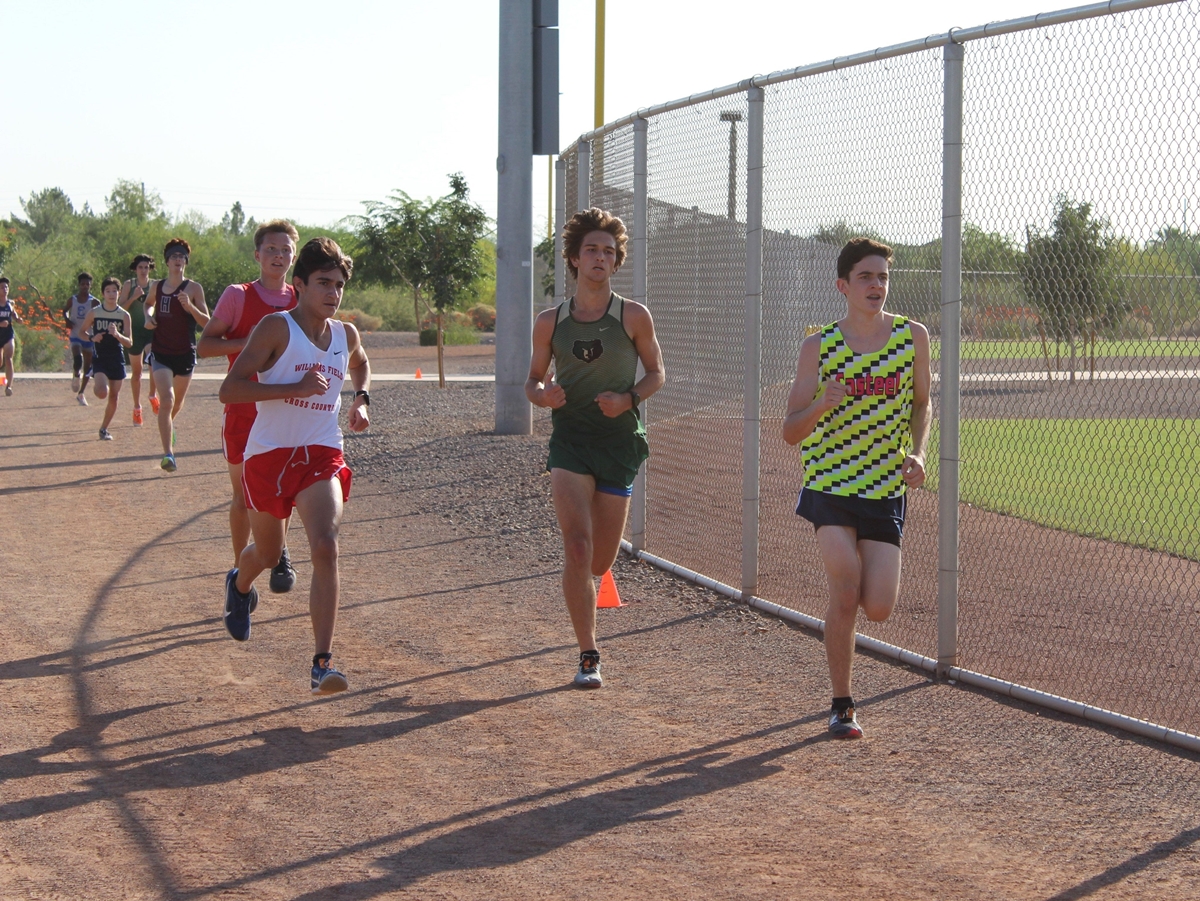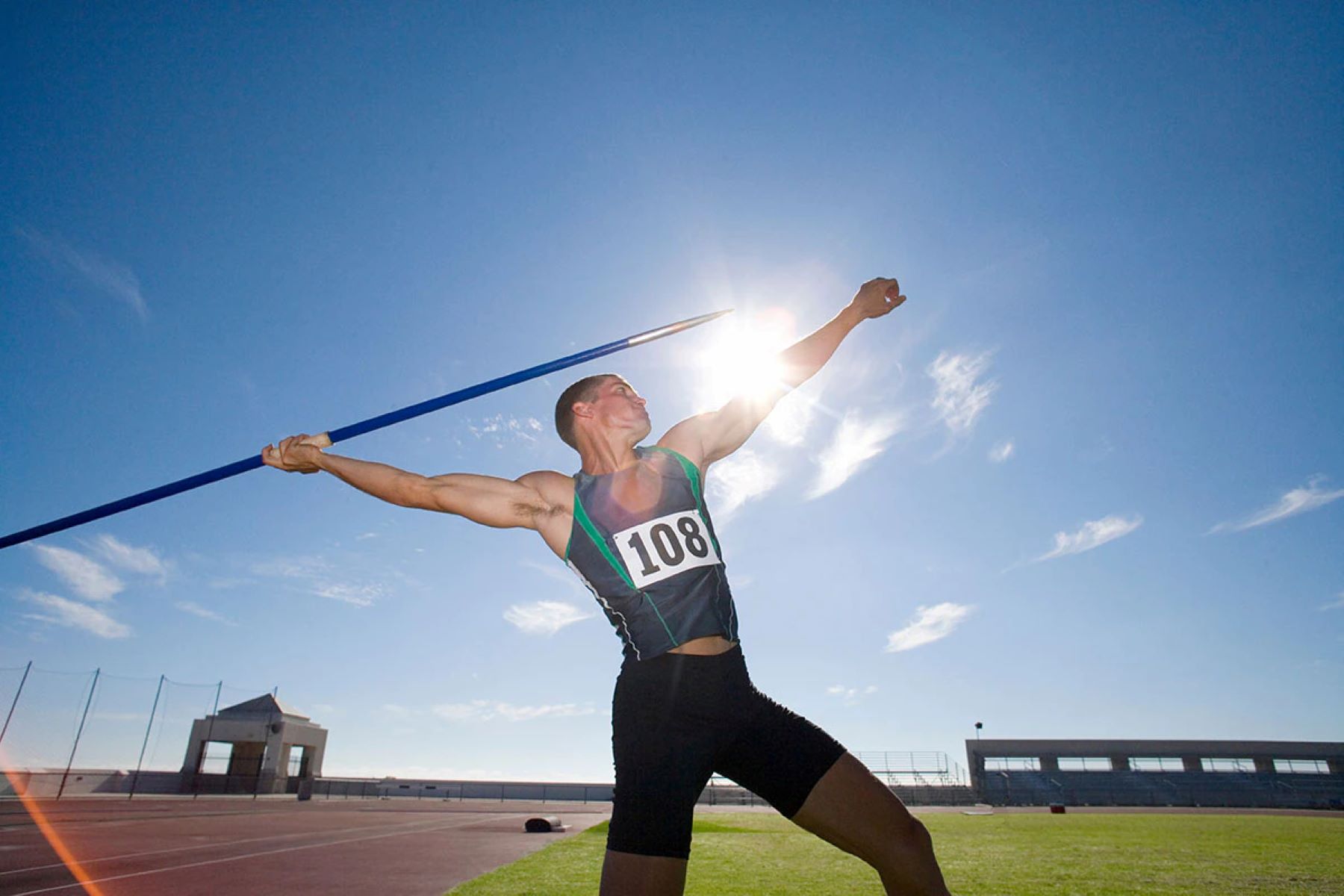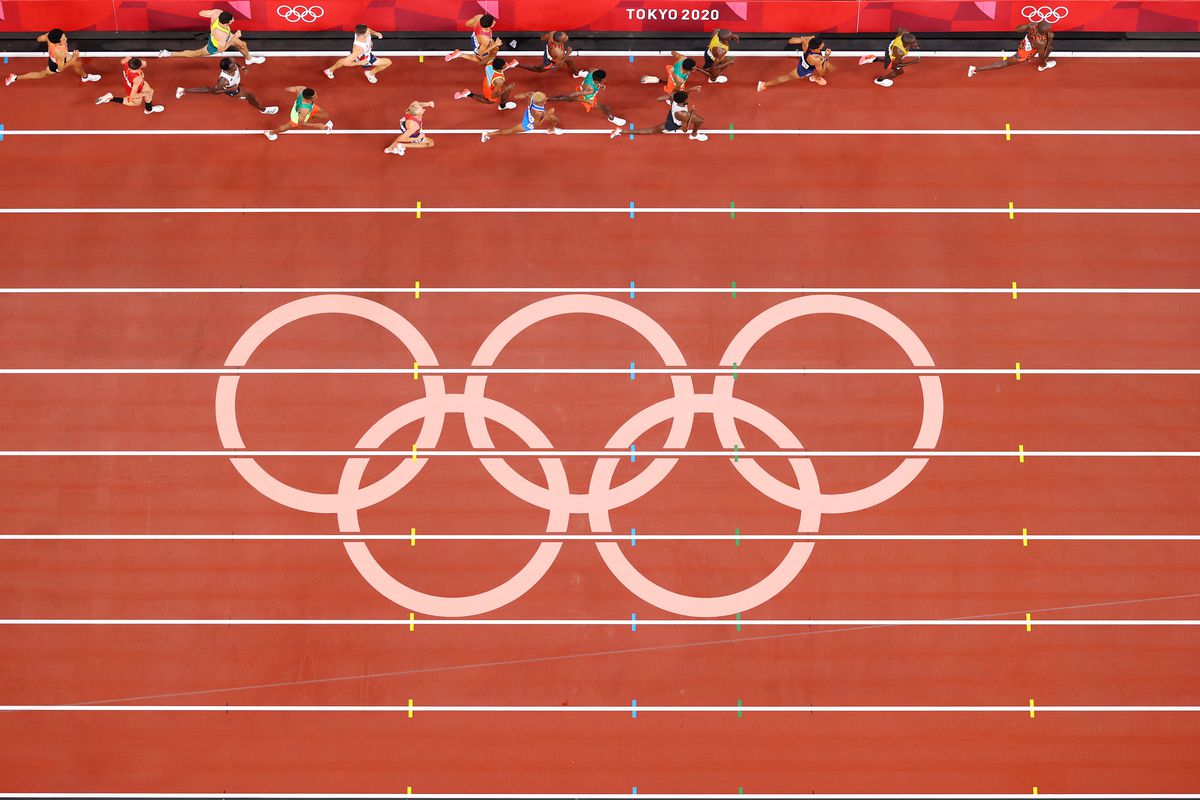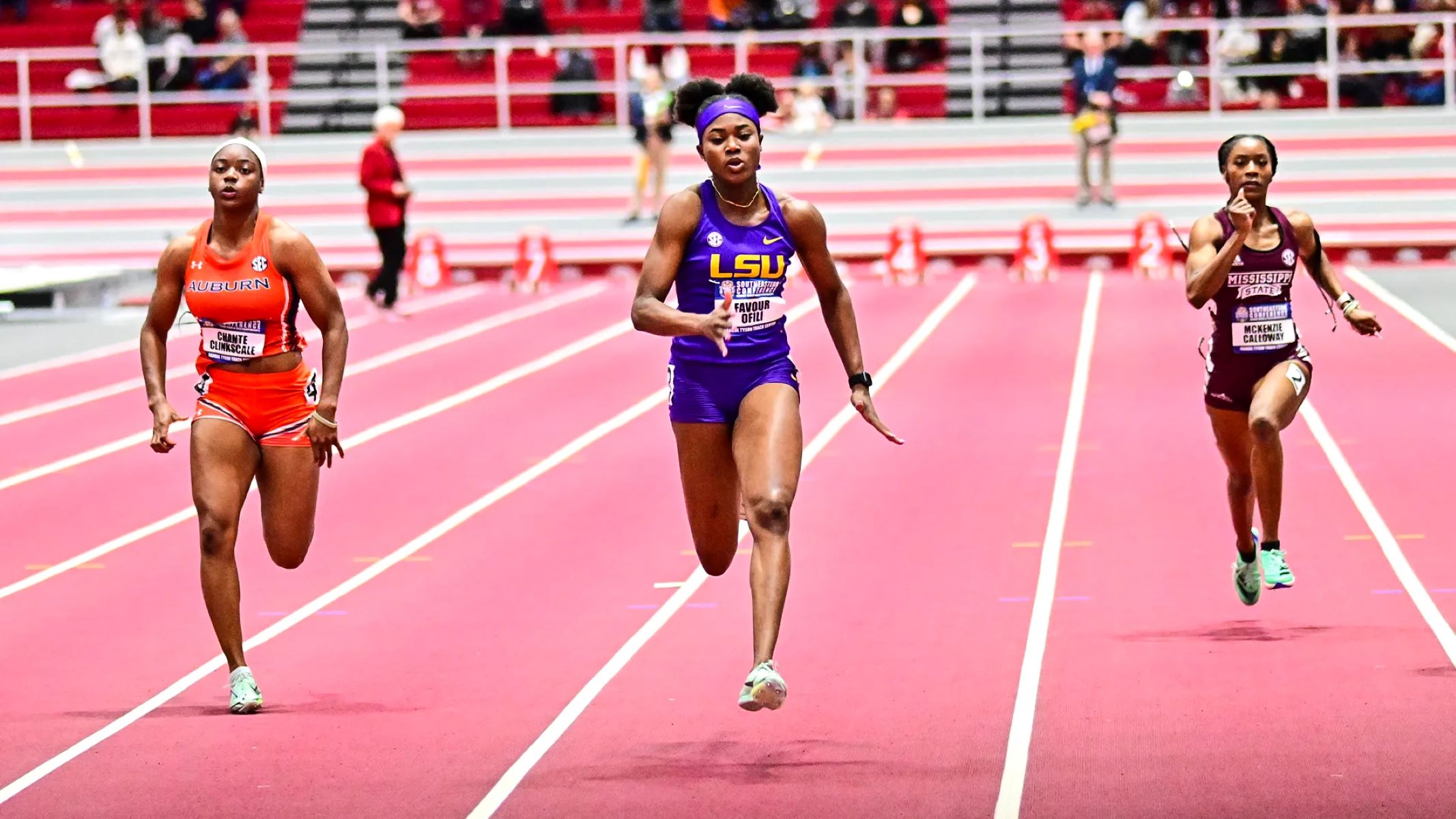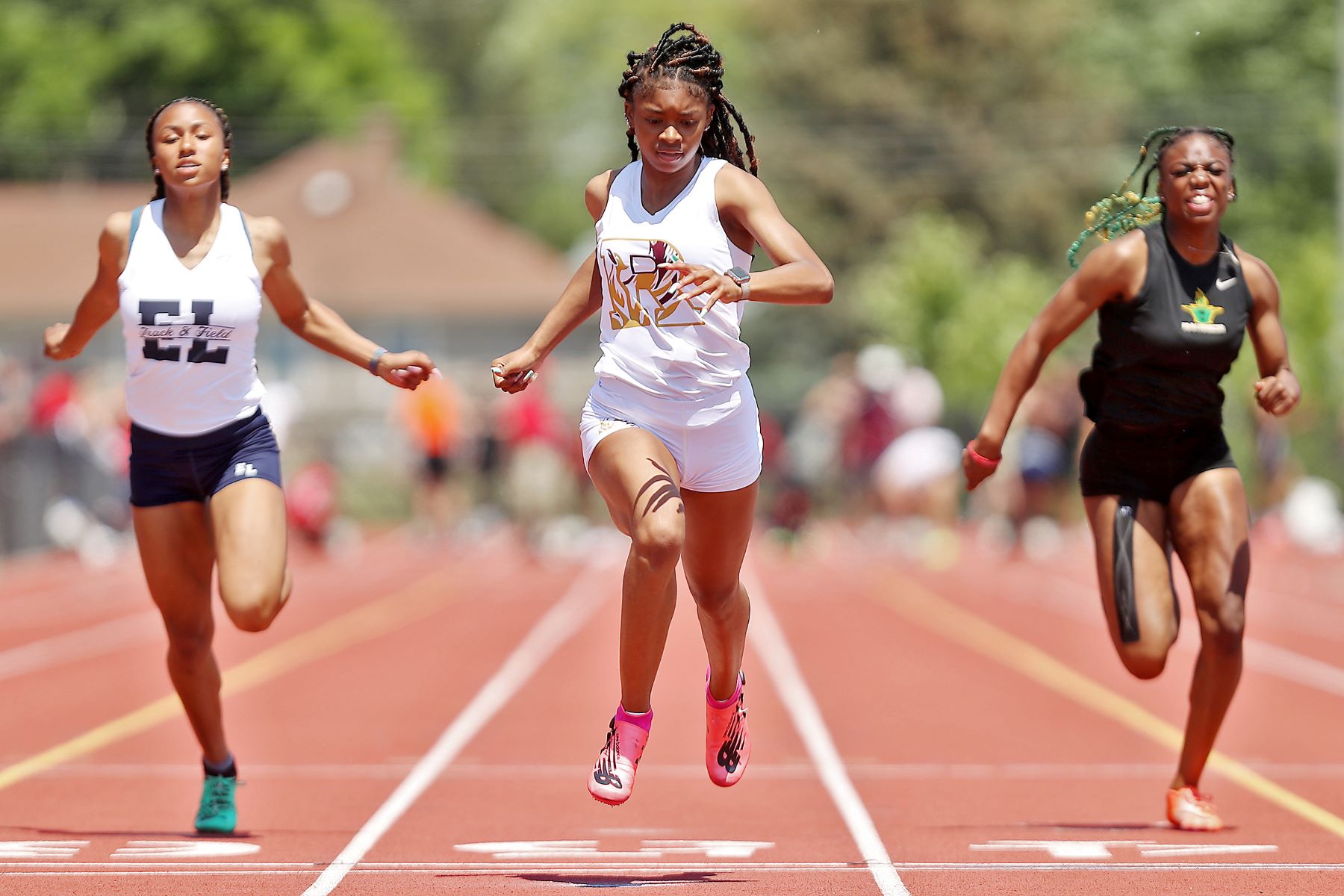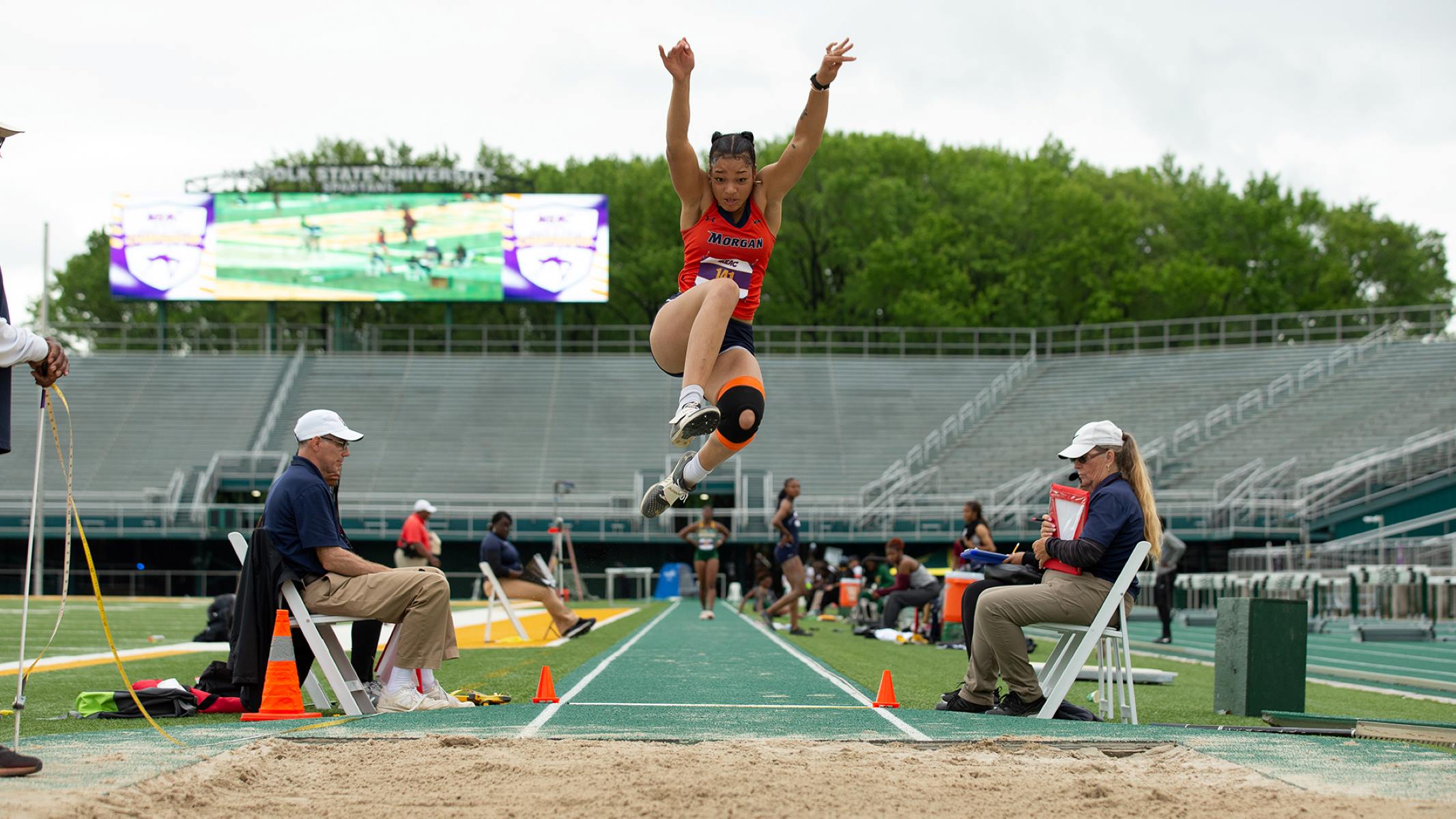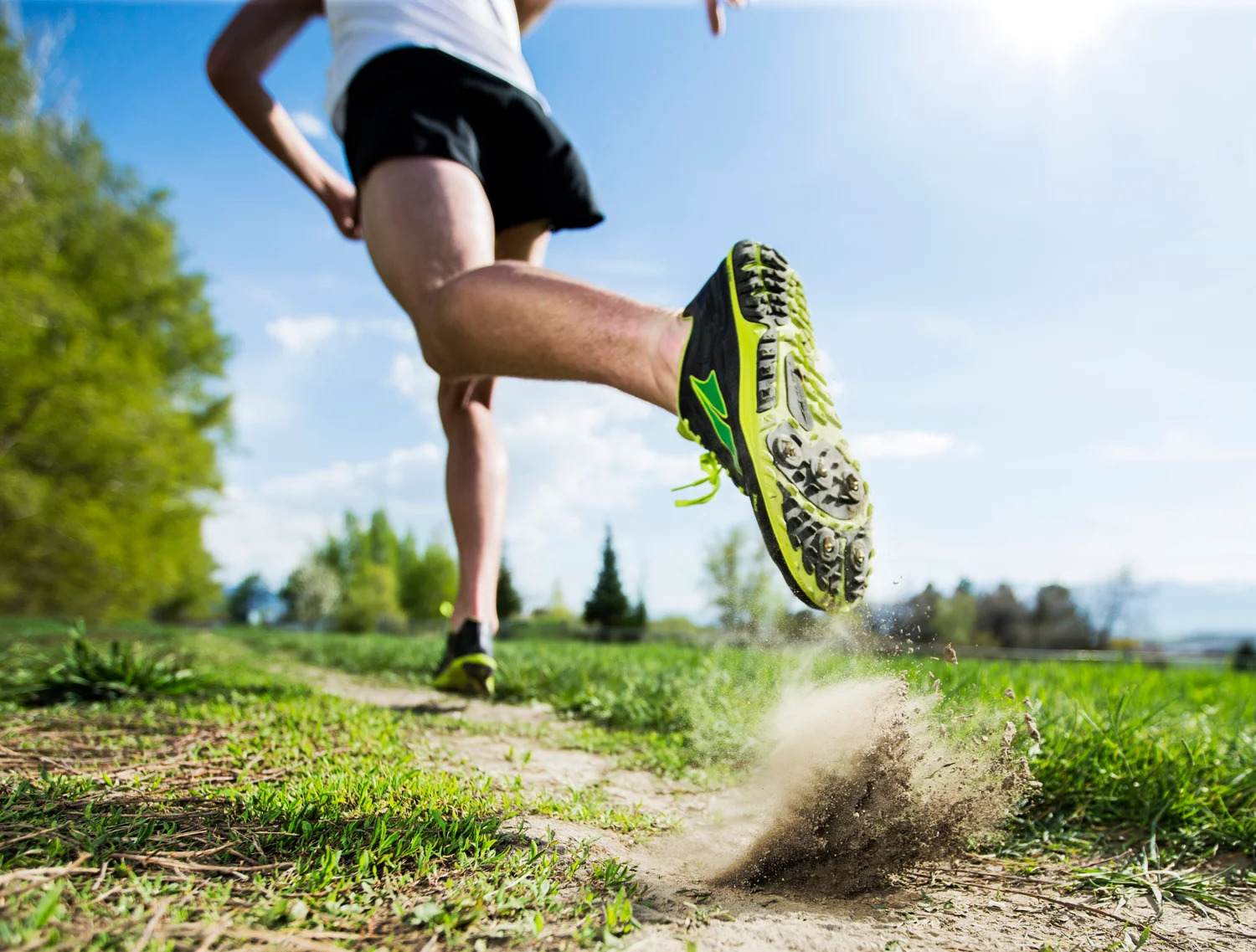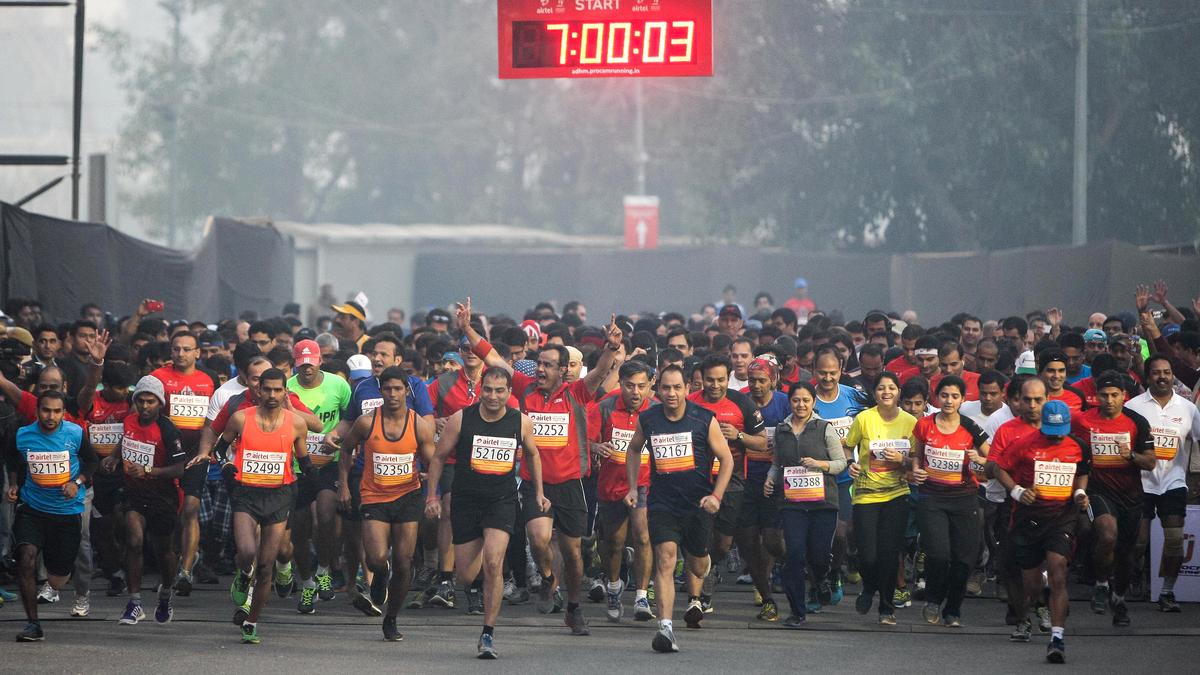Home>Misc>Featured>What Is A Steeplechase In Track And Field
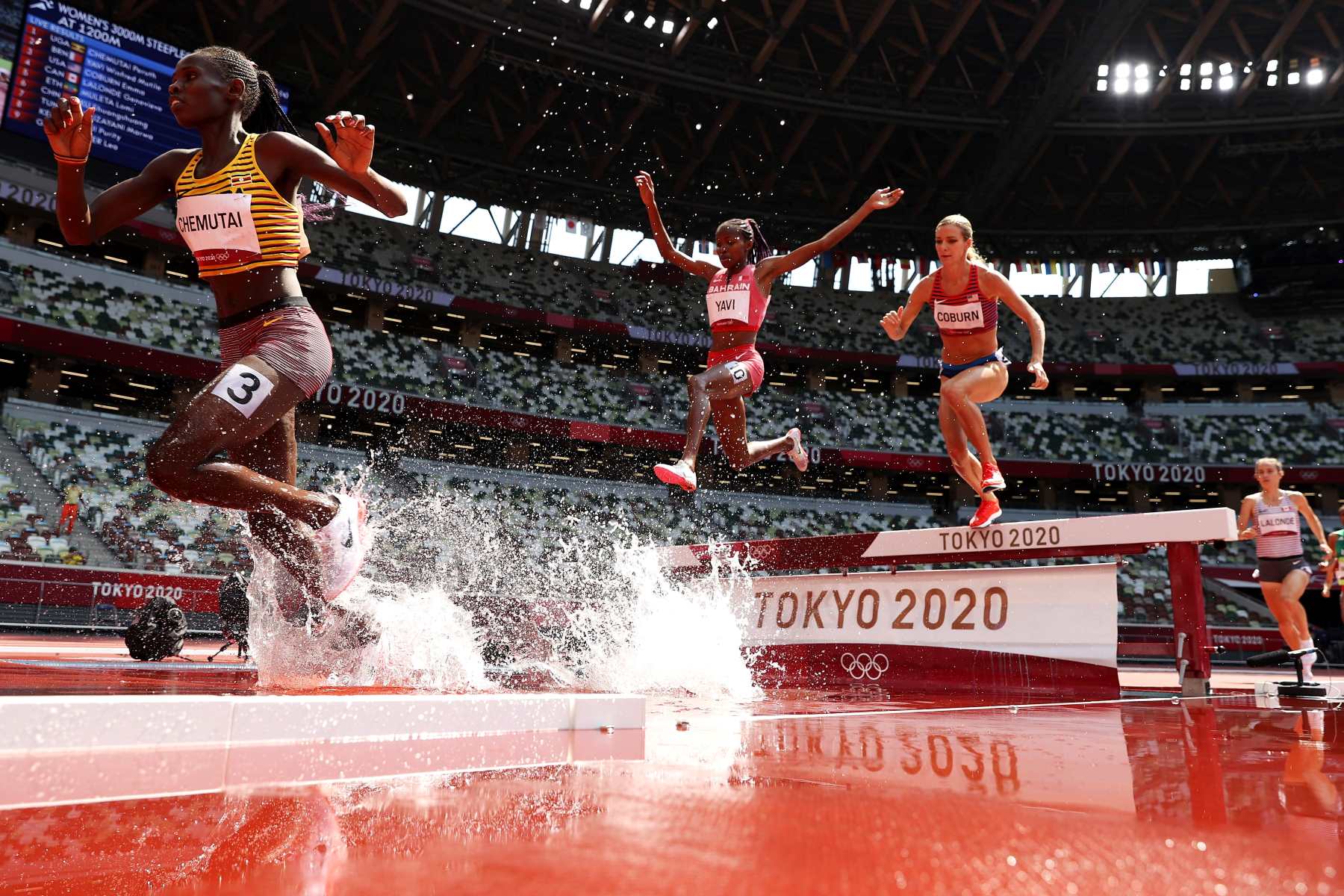

Featured
What Is A Steeplechase In Track And Field
Published: September 6, 2023
Discover the thrilling world of steeplechase in track and field. Learn how athletes navigate obstacles in this featured event.
Introduction
Welcome to the exciting world of steeplechase in track and field! If you’re new to the sport or just curious about this particular event, you’ve come to the right place. In this article, we will explore the ins and outs of steeplechase, from its definition and history to the rules, equipment, techniques, and training involved. By the end, you’ll have a comprehensive understanding of what steeplechase is all about, and why it captivates athletes and spectators alike.
Steeplechase is an exhilarating and challenging event that combines elements of distance running with athleticism and a hurdle-like obstacle. It requires a unique set of skills, including endurance, speed, agility, and mental toughness. The race is not only physically demanding but also strategically complex, making it a true test of an athlete’s overall abilities.
The name “steeplechase” originates from the sport’s origins in horse racing, where the race was traditionally run from one church steeple to another, navigating various obstacles such as fences and water jumps. Over time, the event evolved into a track and field discipline that is now recognized and practiced globally.
Steeplechase is a thrilling spectacle for both participants and spectators. The combination of long-distance running, hurdles, and water jumps adds an extra layer of excitement and unpredictability to the race. It is a true test of an athlete’s physical and mental grit, as they must overcome fatigue, navigate barriers, and maintain a steady pace throughout the course.
In the following sections, we will delve deeper into the history of steeplechase, the rules and regulations that govern the event, the equipment used, as well as the training, techniques, and strategies utilized by elite athletes. Whether you’re an aspiring steeplechase competitor or simply interested in learning more about this unique track and field event, read on to discover all you need to know about steeplechase.
Definition of a Steeplechase
A steeplechase is a track and field event that combines long-distance running with various obstacles and hurdles. It requires athletes to navigate a designated course, covering a specific distance while clearing barriers such as hurdles and water jumps. The race is known for its mix of running speed, endurance, agility, and technique.
The steeplechase event can be categorized into two main types: the men’s and women’s 3000-meter steeplechase and the men’s only 3000-meter steeplechase. In both variations, athletes start on a track, complete a number of laps, and encounter a set number of barriers and water jumps along the way. The race is usually held on an outdoor track, although some competitions may also take place on other surfaces like grass or cross-country courses.
The barriers in steeplechase are similar to traditional hurdles but come with a noticeable difference. While regular hurdles are rigid and must be cleared by jumping entirely over them in a straight line, steeplechase barriers are more flexible and designed to be potentially knocked down if an athlete fails to clear them cleanly. Each barrier is around 3.94 feet (1.2 meters) high and is often made of a lightweight material.
Another distinguishing feature of the steeplechase event is the water jump. This obstacle consists of a barrier followed by a water pit. Athletes must clear the barrier and then navigate their way through the water, often by stepping on or jumping over the barrier. The water pit is typically around 12 feet (3.66 meters) long and can be filled with either water or a synthetic material to simulate the appearance and feel of water.
Steeplechase is a challenging and fast-paced event that requires athletes to possess a unique skill set. They must have the endurance to sustain a fast pace over the specified distance, the speed and agility to clear the barriers efficiently, and the strength and coordination to navigate the water jumps without losing momentum. Strategy also plays a vital role, as athletes must carefully plan their approach to each barrier and maintain a consistent rhythm throughout the race.
Now that we have a clear understanding of what comprises a steeplechase event, let’s dive into its fascinating history and how it became a prominent discipline in track and field.
History of Steeplechase in Track and Field
The origins of steeplechase can be traced back to early 19th-century Ireland, where it began as a cross-country race with a unique twist. The race was traditionally run from one church steeple to another, hence the name “steeplechase.” Participants had to navigate various natural obstacles, such as streams, fences, and hedges, along the way.
Steeplechase gained popularity and quickly spread to Great Britain, where it was introduced as an organized track and field event in the mid-19th century. The sport’s development can be attributed to the establishment of athletic clubs and the standardization of rules. Competitions began to take place on tracks, featuring set distances and the addition of man-made barriers and water jumps.
The first recorded steeplechase race held on a track took place at Market Harborough in England in 1830. It consisted of a distance of 2 miles (3.22 kilometers) and included several jumps over hedges and ditches. The success of this event led to the creation of the modern steeplechase race.
In 1865, the sport made its debut in the prestigious annual Oxford versus Cambridge University match. It was eventually included as an Olympic event in the 1900 Paris Olympic Games, making it one of the oldest events in the history of Olympic track and field. The women’s steeplechase, however, wasn’t included in the Olympic program until the 2008 Beijing Games.
Throughout the years, the steeplechase event has evolved in terms of rules and regulations. For instance, the length of the race has changed from the original 2 miles to the current standard distance of 3000 meters, which was introduced for both men’s and women’s steeplechase races in the late 20th century. Additionally, the number and design of the barriers and water jumps have been standardized to ensure consistency across competitions.
In recent decades, steeplechase has become a highly competitive event in the world of track and field. Athletes from various countries have showcased their skills and athleticism, setting new records and achieving remarkable performances. The development of training techniques and the growing popularity of the sport have contributed to advancements in steeplechase performance.
Now that we have explored the history of steeplechase, let’s move on to the rules and regulations that govern this thrilling track and field event.
Rules and Regulations of Steeplechase
Steeplechase in track and field follows a set of rules and regulations to ensure fair competition and athlete safety. These guidelines govern everything from the distance and layout of the course to the specifications of the barriers and water jumps. Understanding these rules is essential for both athletes and spectators to appreciate the sport fully.
The standard configuration for steeplechase involves a 3000-meter course for both men’s and women’s events. The race takes place on a track, typically an outdoor track, and athletes complete a specified number of laps. Throughout the race, runners must navigate a total of 28 barriers and seven water jumps.
The barriers in steeplechase are positioned at regular intervals. They are 3.94 feet (1.2 meters) high for men’s events and 2.95 feet (0.9 meters) high for women’s events. Unlike traditional hurdles, the barriers are designed to be potentially knocked down if an athlete fails to clear them cleanly. However, intentionally knocking down a barrier can result in disqualification.
The water jumps in steeplechase consist of a barrier followed by a water pit. As athletes approach the water jump, they must jump over the barrier and navigate through the water pit, which is typically around 12 feet (3.66 meters) long. The water depth should be a minimum of 30 centimeters (11.8 inches) and a maximum of 70 centimeters (27.5 inches). Care is taken to ensure the surface is safe and soft, either by filling the pit with water or a synthetic material.
Athletes are required to clear all barriers and water jumps successfully while staying within the designated lane. Failure to complete these obstacles may result in time penalties or disqualification. The order in which the barriers and water jumps appear on the course must be followed precisely, and athletes are not permitted to bypass any of these obstacles.
To ensure fairness, steeplechase races usually have designated officials monitoring the event. These officials are responsible for observing the athletes’ adherence to the rules, noting any violations, and imposing penalties or disqualification if necessary.
It’s worth noting that the rules and regulations for steeplechase may vary slightly between different governing bodies and competitions. For example, the number and placement of barriers may differ in specific events or championships. Athletes are advised to familiarize themselves with the specific rules of the competition they are participating in to ensure they meet all requirements.
Now that we have a clear understanding of the rules that govern steeplechase, let’s explore the equipment used in this dynamic and thrilling event.
Equipment Used in Steeplechase
Steeplechase is a demanding and technical event that requires athletes to have the right equipment to perform at their best. From footwear to apparel and specific accessories, the equipment used in steeplechase plays a crucial role in an athlete’s performance and safety.
One of the most essential pieces of equipment for steeplechase is the running shoes. Athletes need lightweight and supportive shoes that provide adequate cushioning and traction on both the track and uneven terrain. The shoes should also have a flexible sole to allow for quick and smooth movement over obstacles and water jumps. Spike plates are commonly used to enhance grip and traction, especially on the track surface.
In addition to proper footwear, athletes must wear appropriate athletic attire during steeplechase competitions. This typically includes compression shorts or tights, singlets or jerseys, and athletic socks. The clothing should be moisture-wicking and lightweight to help regulate body temperature and prevent discomfort or chafing during the race.
For safety and identification purposes, athletes are often required to wear a bib or number during steeplechase races. This allows officials, spectators, and fellow competitors to easily recognize and track participants throughout the event. The bib is usually pinned to the front or back of the athlete’s singlet or jersey.
Due to the physical demands of steeplechase and the potential contact with barriers and water jumps, protective accessories are sometimes utilized. Some athletes choose to wear lightweight knee pads or ankle guards to minimize the risk of injury during the race.
Additionally, steeplechase events may require athletes to use specific equipment for the water jumps. This can include lightweight hurdle frames covered with a synthetic material or rubber to simulate the appearance and feel of water. The water pit itself may also contain a platform or matting to ensure safe and consistent footing.
Officials and organizers play a pivotal role in ensuring the proper set-up and maintenance of all equipment used in steeplechase. They must ensure that barriers are securely positioned, water jumps meet safety standards, and all equipment undergoes regular inspections to prevent any potential hazards during the race.
It’s important for athletes to test and become familiar with their equipment during training sessions to ensure they are comfortable and perform optimally on race day. Properly fitted shoes, well-maintained apparel, and reliable accessories contribute to an athlete’s confidence and ability to focus on executing their race strategy.
Now that we have covered the equipment used in steeplechase, let’s move on to explore the techniques and strategies employed by athletes in this thrilling event.
Techniques and Strategies in Steeplechase
Steeplechase requires a combination of physical prowess and strategic planning to navigate the obstacles and maintain a competitive edge throughout the race. Athletes employ various techniques and strategies to optimize their performance in this challenging event.
One fundamental technique in steeplechase is the ability to efficiently clear the barriers. Athletes must approach each barrier with speed and precision, coordinating their steps and stride pattern to ensure a smooth takeoff. The lead leg is typically used to clear the barrier, followed by a quick recovery of the trail leg to regain a steady rhythm. Proper arm positioning and body alignment are crucial in maintaining balance and minimizing any loss of momentum.
In addition to the barriers, athletes also need to master the technique of clearing the water jumps. Approaching the water jump with adequate speed and an accurate takeoff point is crucial. Athletes must effectively propel themselves over the barrier and land safely in the water, minimizing any disruption to their forward momentum. Proper technique, including utilizing arm movements and maintaining an upright posture, assists in maintaining fluidity throughout the water pit.
Strategic planning is also paramount in steeplechase. Athletes need to evaluate the course and barriers, adjusting their pace and planning their approach to conserve energy and maintain a competitive position. Determining the optimal time to make surges or pass competitors is crucial, as these decisions can greatly impact the outcome of the race. Thorough preparation and understanding of an athlete’s strengths and weaknesses aid in creating effective race strategies.
Mental fortitude is another key aspect of steeplechase. As the race progresses, fatigue sets in, and athletes must maintain focus and mental toughness to overcome physical challenges. Building mental resilience through visualization techniques, positive self-talk, and mental rehearsal of race scenarios can help athletes push through the pain and maintain their competitive drive.
Training for steeplechase involves a combination of endurance running, hurdling techniques, and specific strength exercises. Running intervals, long-distance workouts, and speed training are crucial for building the necessary endurance and speed required for the event. Hurdle drills and technique sessions assist in refining hurdle clearance and water jump skills. Strength exercises, such as plyometrics and core workouts, enhance an athlete’s power and stability to tackle the obstacles effectively.
The most successful steeplechase athletes are those who can blend their physical abilities with strategic decision-making, precision, and mental toughness. The combination of technical proficiency, race strategy, and mental preparation ultimately allows athletes to excel in this challenging and exhilarating event.
Now that we’ve explored the techniques and strategies utilized in steeplechase, let’s turn our attention to the training regimens necessary to excel in this demanding discipline.
Training for Steeplechase
Training for steeplechase requires a combination of endurance, speed, agility, and technique to excel in this demanding track and field event. Athletes must focus on developing the specific skills necessary to navigate barriers and water jumps while maintaining a fast pace over a designated distance.
Endurance training forms the foundation of steeplechase preparation. Athletes incorporate long-distance runs into their training regimen to build cardiovascular fitness and increase their tolerance for sustained effort. These workouts often involve running at a steady pace for extended periods, simulating the demands of the race distance.
Interval training is also crucial to improve steeplechase performance. Athletes combine intense bursts of speed with recovery periods to develop their anaerobic capacity and enhance their ability to handle surges in race tempo. Running intervals of varying distances at race pace or faster helps athletes develop the necessary speed and power required for steeplechase.
Mastering hurdle technique and water jump skills is essential in steeplechase training. Athletes practice clearing barriers of similar height and distance to those used in competitions. They work on proper stride patterns, takeoff angles, and efficient clearance techniques to minimize energy expenditure and maintain momentum during the race. Regular hurdle drills and technical sessions aid in refining these skills and building muscle memory.
Specific strength and conditioning exercises target the muscles used in steeplechase, helping athletes improve power, stability, and injury prevention. Plyometric exercises like box jumps and bounding drills enhance explosive strength and elasticity. Core stability exercises, such as planks and leg raises, strengthen the abdominal and lower back muscles, which are crucial for maintaining proper form and balance during the race.
Cross-training activities, such as swimming or cycling, can provide additional cardiovascular conditioning while reducing the impact on the joints. This allows athletes to maintain their fitness while minimizing the risk of overuse injuries during intense training periods.
Mental preparation and race simulations play a significant role in steeplechase training as well. Athletes visualize themselves successfully navigating barriers, clearing water jumps with ease, and making strategic decisions during the race. They also conduct race-specific workouts or mock competitions to simulate the intensity and demands of the event, helping them develop race strategies and practice maintaining focus under pressure.
Proper recovery is essential in steeplechase training to prevent injuries and optimize performance. Athletes incorporate rest days, massage therapy, and stretching into their training routine to aid in muscle recovery. Adequate nutrition and hydration are also crucial for replenishing energy stores and promoting muscle repair.
As with any sport, consistency and gradual progression are key in steeplechase training. Athletes gradually increase the intensity, volume, and complexity of their workouts over time to prevent injuries and facilitate continuous improvement.
By incorporating a well-rounded training program that includes endurance, speed, technique, strength, and mental preparation, steeplechase athletes can maximize their potential and achieve success in this exhilarating track and field event.
Now that we’ve covered the training aspects of steeplechase, let’s explore some notable records and performances in this exciting discipline.
Notable Steeplechase Records and Performances
Steeplechase has seen many remarkable records and performances throughout its history. Athletes from around the world have pushed the boundaries of what is possible in this demanding event, achieving extraordinary feats of speed, endurance, and technique.
One standout performance in the men’s steeplechase is that of Kenya’s Saif Saaeed Shaheen. In 2004, competing for Qatar under the name Stephen Cherono, Shaheen set a world record time of 7 minutes and 53.63 seconds in Brussels. His record-breaking run showcased his incredible speed and demonstrated his dominance in the event. Shaheen was also a two-time World Champion, solidifying his status as one of the greatest steeplechase athletes of all time.
Another notable men’s steeplechase record was set by the legendary Conseslus Kipruto of Kenya. In 2016, at the Rio Olympics, Kipruto stormed to victory, setting a new Olympic record of 8 minutes and 3.28 seconds. His impressive stride and impeccable technique demonstrated his mastery of the event, solidifying his place as one of the sport’s greatest athletes.
In the women’s steeplechase, one athlete who stands out is Gulnara Samitova-Galkina of Russia. At the 2008 Beijing Olympics, she delivered an exceptional performance, not only winning the gold medal but also setting a world record time of 8 minutes and 58.81 seconds. Samitova-Galkina’s record-breaking run showcased her strength, agility, and precision over the barriers and water jumps, firmly establishing her as one of the sport’s most dominant female athletes.
Beatrice Chepkoech, also from Kenya, set a remarkable world record in the women’s steeplechase in 2018. At the Herculis Diamond League meet in Monaco, Chepkoech crossed the finish line in a time of 8 minutes and 44.32 seconds, shaving off almost eight seconds from the previous record. Her exceptional performance demonstrated her endurance, speed, and technical prowess, solidifying her place among the greatest steeplechase athletes.
It is worth mentioning that these records and performances represent just a few of the countless remarkable achievements in steeplechase. Numerous athletes have pushed the boundaries of human capability and provided inspiration for aspiring steeplechase competitors worldwide.
As technology advances and training techniques evolve, it is likely that we will witness even more remarkable records and performances in the future. Athletes continue to strive for excellence, pushing themselves to new heights and inspiring the next generation of steeplechase athletes to chase their dreams.
Now that we’ve explored some notable records and performances, let’s compare steeplechase to other track and field events to better understand its unique characteristics.
Differences between Steeplechase and other Track and Field Events
Steeplechase is a unique event in track and field, offering a distinctive set of challenges and characteristics that set it apart from other disciplines. Here are some key differences between steeplechase and other track and field events.
First and foremost, steeplechase incorporates barriers and water jumps, which are absent in most other track and field events. Athletes must navigate a series of barriers, each approximately 3.94 feet (1.2 meters) high for men and 2.95 feet (0.9 meters) high for women, while maintaining their stride and rhythm. Additionally, they must clear several water jumps, combining speed, agility, and technique, making steeplechase a uniquely challenging event.
Unlike sprinting events, where athletes focus predominantly on pure speed, steeplechase demands a combination of endurance and speed. The race covers a distance of 3000 meters, requiring athletes to pace themselves strategically to maintain a fast tempo throughout. It requires a delicate balance between conserving energy and pushing the limits.
Compared to long-distance events like the 5000 meters or 10,000 meters, steeplechase adds an extra layer of complexity with its barriers and water jumps. Athletes must adjust their stride and timing to efficiently clear the barriers while managing the impact on their overall race pace. The water jumps present a unique challenge, as athletes must navigate the jump, maintain momentum through the water pit, and quickly regain their stride.
Furthermore, steeplechase differs from the hurdles event in that the barriers used in steeplechase are more flexible and capable of being knocked down if an athlete fails to clear them properly. In hurdles, athletes must successfully clear rigid, fixed-height barriers while maintaining speed and rhythm. The technique and approach to the barriers also vary, with steeplechase requiring a slightly different stride pattern and takeoff strategy.
Another notable difference is the strategic element involved in steeplechase. Athletes must plan their approach to each barrier and water jump, considering factors such as their competitors’ positions and their own current level of fatigue. They must decide when to surge in the race, pass competitors, or conserve energy for the final sprint, all while maintaining a consistent pace and negotiating the obstacles.
Finally, steeplechase differs from other field events like throwing or jumping events since it combines running with obstacles. Other field events focus primarily on power, technique, and precision rather than the endurance and technical proficiency required in steeplechase.
These differences make steeplechase a distinct and captivating event within the realm of track and field. The combination of speed, endurance, agility, and technique sets steeplechase apart and offers a unique challenge for athletes and a thrilling spectacle for spectators.
Now that we’ve explored the differences between steeplechase and other track and field events, let’s delve into the physical demands that steeplechase places on athletes.
The Physical Demands of Steeplechase
Steeplechase is a physically demanding event that requires athletes to possess a unique combination of strength, speed, endurance, and agility. The challenges presented by the barriers and water jumps, coupled with the distance covered, place significant physical demands on steeplechase athletes.
Endurance is a crucial component of steeplechase, as athletes must maintain a fast pace over the race distance of 3000 meters. The ability to sustain an efficient running form and sustain optimal speed while negotiating the obstacles is paramount. Athletes must have excellent cardiovascular fitness, allowing them to maintain an elevated heart rate and oxygen supply to the working muscles throughout the race.
Speed is also essential in steeplechase, particularly when approaching barriers and transitioning from one obstacle to the next. Athletes must possess the necessary acceleration and turnover speed to clear the barriers efficiently. Maintaining speed throughout the race allows athletes to conserve energy and can be the difference between victory and defeat.
Agility and coordination are vital in steeplechase, as athletes must navigate the barriers and water jumps with precision and without disrupting their momentum. Quick footwork, balance, and flexibility are required to clear the barriers while minimizing the loss of timing and rhythm. Athletes need to adapt their strides and adjust their body positions to efficiently clear the obstacles.
Steeplechase places significant strain on the lower body, especially the leg muscles. Athletes must have developed quadriceps, hamstrings, and calf muscles to propel themselves over the barriers and through the water jumps. Core strength and stability are also vital for maintaining proper posture, balance, and control throughout the race.
Additionally, steeplechase presents unique challenges to the upper body. Athletes utilize their arm movements to maintain balance, generate power, and aid in clearing the barriers. This requires developed arm strength and coordination to synchronize arm movements with leg actions during the race.
The impact on the body during steeplechase can be intense, especially during the landings after clearing the barriers and when running through the water pit. Athletes must possess strength and resilience to absorb those impacts and quickly regain their rhythm and forward momentum. Proper training and conditioning help minimize the risk of injuries and provide the necessary physical resilience to perform at a high level.
Lastly, mental toughness is critical in steeplechase, as athletes must push through physical discomfort, fatigue, and possible setbacks during the race. The ability to stay focused, maintain motivation, and persevere is essential for success in this demanding event.
Overall, steeplechase demands a unique combination of endurance, speed, agility, strength, and mental tenacity. Athletes must possess both the physical capabilities and mental fortitude to tackle the challenges presented by the barriers, water jumps, and the distance covered.
Now that we have explored the physical demands of steeplechase, we can conclude our comprehensive overview of this captivating track and field discipline.
Conclusion
Steeplechase is a thrilling and demanding event that combines long-distance running with obstacles such as barriers and water jumps. It tests the physical and mental capabilities of athletes, requiring endurance, speed, agility, technique, and strategic planning. As athletes navigate the barriers and water jumps, they showcase their strength, skill, and determination.
The sport of steeplechase has a rich history, originating from cross-country races in Ireland and evolving into a track and field discipline recognized globally. Over the years, athletes have set remarkable records and delivered outstanding performances, pushing the boundaries of what is possible in this challenging event. Through their achievements, they inspire aspiring steeplechase competitors worldwide.
To excel in steeplechase, athletes must undergo specialized training that includes endurance work, interval training, hurdle drills, and strength conditioning. Mental preparation is equally vital to develop focus, resilience, and race strategy. The right equipment, including proper running shoes, athletic apparel, and protective accessories, enhances performance and promotes safety.
One of the distinguishing features of steeplechase is the combination of barriers and water jumps, setting it apart from other track and field events. The strategic element in steeplechase adds another layer of complexity, as athletes make decisions on when to surge, pass competitors, or conserve energy during the race.
The physical demands of steeplechase require athletes to have endurance to maintain a fast pace, speed to navigate obstacles efficiently, agility to clear barriers, and strength to power through the race. Mental fortitude is essential to persevere through fatigue and setbacks.
In conclusion, steeplechase is a thrilling and challenging event in track and field. The combination of speed, endurance, agility, and technique sets it apart from other disciplines. It continues to captivate athletes and spectators alike, pushing the boundaries of human capability and inspiring a new generation of steeplechase competitors.
